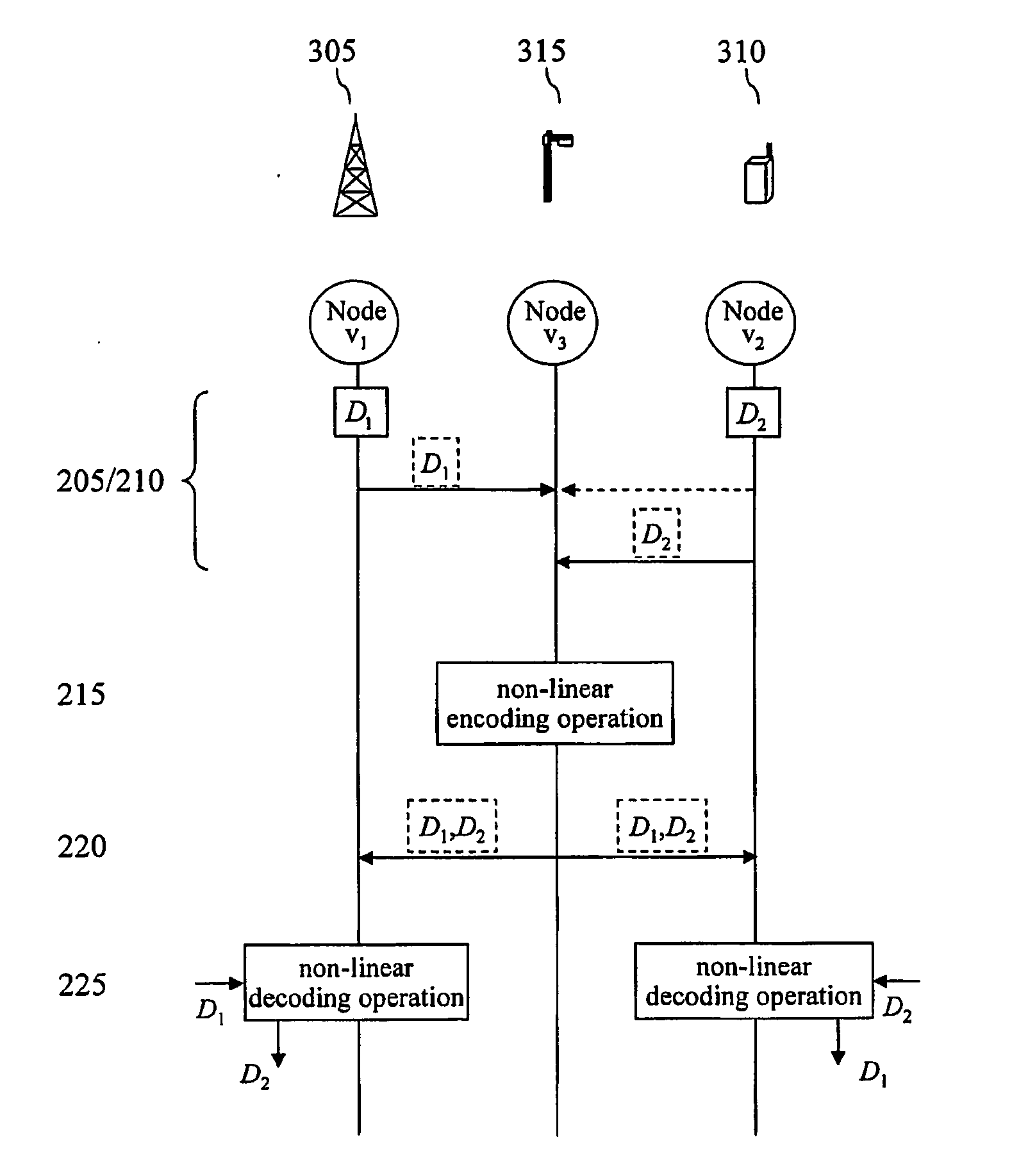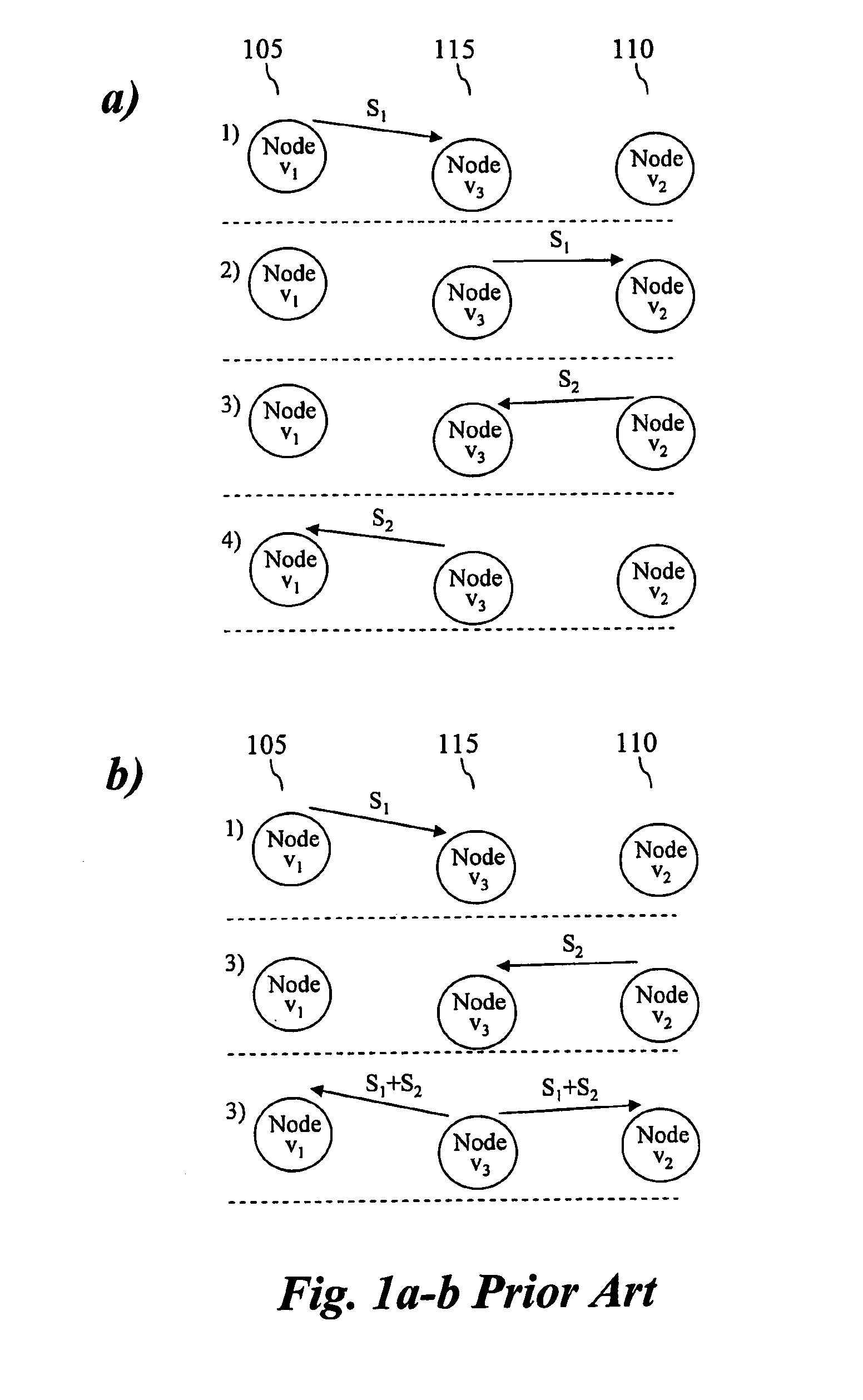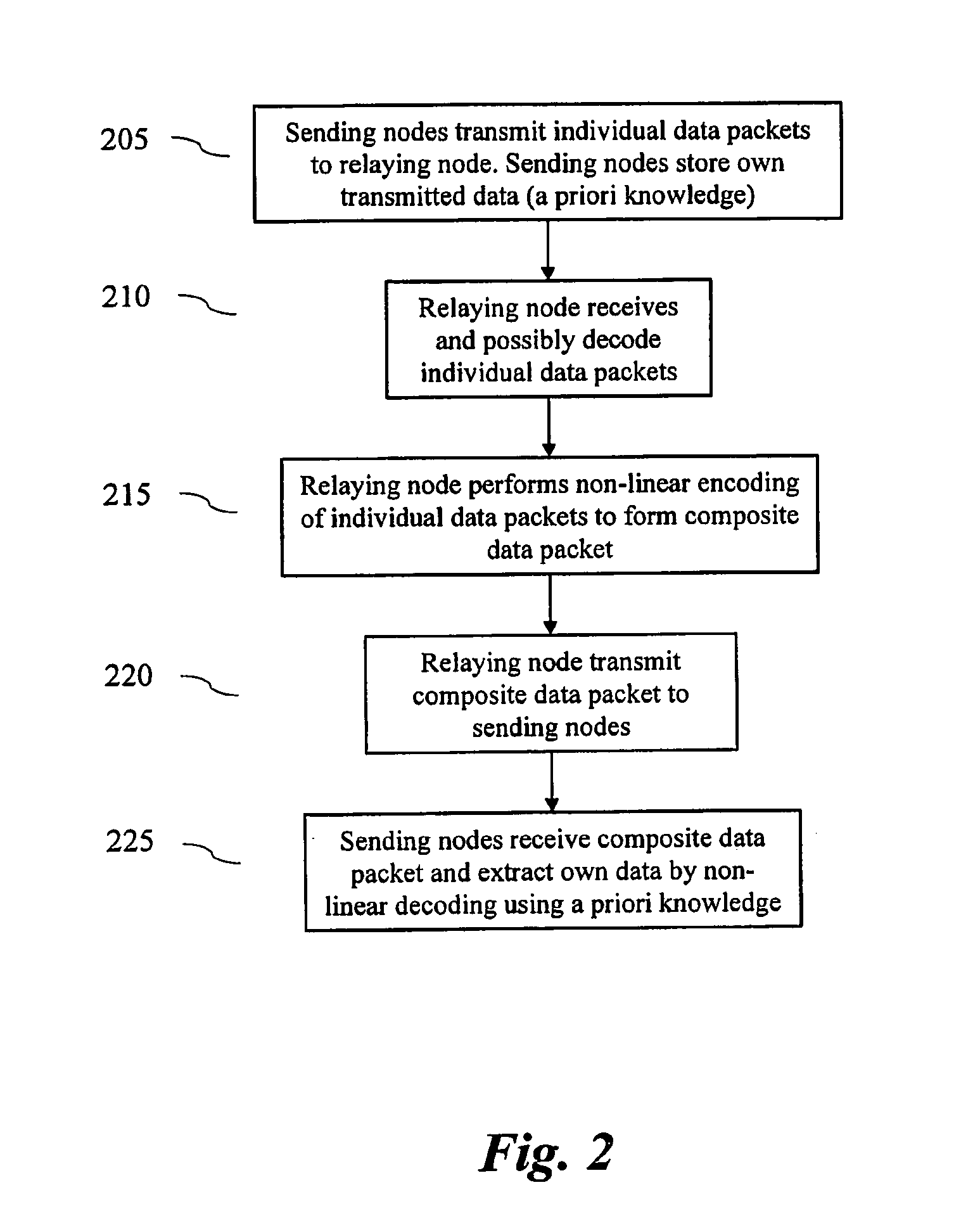Method and Arrangement for Bi-Directional Relating in Wireless Communication Systems
- Summary
- Abstract
- Description
- Claims
- Application Information
AI Technical Summary
Benefits of technology
Problems solved by technology
Method used
Image
Examples
Embodiment Construction
[0035]The traditional 4-phase approach, as described with reference to FIG. 1, may be enhanced by the use of a priori known information for interferences cancellation in receiving nodes in a bidirectional relay system. However, in a system wherein the medium is of broadcast type, as in typical wireless cellular or wireless multihop networks, the broadcast characteristic of the channel is not optimally exploited by the proposed methods and arrangements. In particular:[0036]the transmit power, or alternatively energy, is not optimally utilized in the relaying node, hence affecting the signal to noise ratio (SNR) of the received signals after interference cancellation at the receiving stations;[0037]the energy received directly from an end node station (by the other end node in receiving mode) is not optimally exploited. In particular, this signal is not optimally exploited together with the relayed signal; and[0038]the receiver required for the previously proposed methods is complex.
[...
PUM
 Login to View More
Login to View More Abstract
Description
Claims
Application Information
 Login to View More
Login to View More - R&D
- Intellectual Property
- Life Sciences
- Materials
- Tech Scout
- Unparalleled Data Quality
- Higher Quality Content
- 60% Fewer Hallucinations
Browse by: Latest US Patents, China's latest patents, Technical Efficacy Thesaurus, Application Domain, Technology Topic, Popular Technical Reports.
© 2025 PatSnap. All rights reserved.Legal|Privacy policy|Modern Slavery Act Transparency Statement|Sitemap|About US| Contact US: help@patsnap.com



